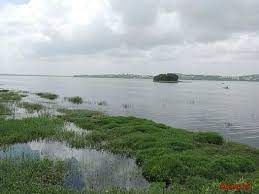UPSC Daily Current Affairs- 25th January 2023 | Current Affairs & Hindu Analysis: Daily, Weekly & Monthly PDF Download
GS-I
Aravalli Safari Park
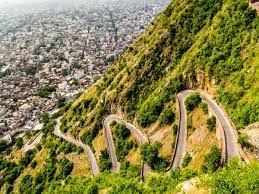
Context
Aravalli safari park project proposed by Haryana Chief Minister which will affect the ecosystem of Aravallis region.
- In April 2022, Chief Minister of Haryana proposed 10,000-acre Aravalli safari park project
- As per Aravalli Bachao Citizens, this will affect the natural habitats, increase waste generation and destroy the region’s fragile ecosystem.
About Aravalli Mountain range:
- It is located in the north-western part of India.
- It is one of the oldest fold mountain systems in the world.
- It is divided into two sections:
- The Sambhar-Sirohi ranges: It is taller and includes Guru Peak on Mount Abu (the highest peak in the Aravalli Range).
- The Sambhar-Khetri ranges: It consisting of three ridges that are discontinuous.
- Several rivers are originated from Aravalli range such as the Banas, Luni, Sakhi, and Sabarma
- It’s passes through states such as Gujarat, Rajasthan, Haryana and Delhi.
- Its average height is from 600 to 900 m.
Significance of Aravalli Mountain range:
- They act as a barrier to cloud to shift eastwards to the lower Himalayas thus contributing to the climate of north India as well.
- Protects the plains from the effect of westerly flowing from the Central Asia region.
- Its responsible for adequate monsoon rainfall and therefore sustaining a plethora of diverse flora fauna, rich biodiversity, livelihood and agriculture in the constituent states.
- A greener Aravalli acts as a groundwater recharge for the region facing acute water scarcity.
- It plays a major role in affecting the local climate and directing economic activities, leveraging geographical and environmental resources and biodiversity profiles of the region.
The key concerns regarding the proposed project:
- Increase in human footfall and vehicular traffic will affect fauna of the area;
- It will disturb the aquifers under the Aravalli hills that are critical reserves for the water-starved districts;
- The location of safari park is in water-scarce region and
- Location of Aravalli safari park project falls under the category of ‘forest’ according to orders by the Supreme Court and protected under the Forest Conservation Act.
Source: DownToEarth
Ajmer Sharif Dargah
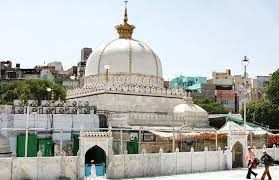
Context
Prime Minister Narendra Modi has handed over Chadar which would be offered on the Urs of Khwaja Moinuddin Chishti at the Ajmer Sharif Dargah.
Ajmer sharif dargah
- It is a Sufi tomb (dargah) of the revered Sufi saint, Moinuddin Chishti, located at Ajmer, Rajasthan, India.
- The shrine has Chishti’s grave (Maqbara).
- All the member of committee of Dargah alknown as “Khadims”
- Moinuddin Chishti was a 13th-century Sufi saint and philosopher.
- during the reign of the Sultan Iltutmish
- The white marble dome of Chishti’s shrine, as seen today, was built in 1532.
- It is an example of Indo-Islamic architecture and the dome features a lotus and a crown of gold, donated by Rampur’s Nawab Haider Ali Khan.
- The dargah has a royal darbar, Mehfil Khana, that was constructed in 1888.
- The complex also has a Langar Khana and a Mahfil Khana
- The Jhalara is a natural tank of water that is used by pilgrims
- The Jannati Darwaza is a door made of silver that is used only on rare occasions. It is also referred to as the Bihisti Darwaza.
- The death anniversary of Moinuddin Chishti is called the Urs Sharif festival
Source: Newsonair
Green comet

Context
Astronomers recently spotted a comet using the wide-field survey camera at the Zwicky Transient Facility (ZTF) in the US, which is appearing near earth after nearly 50,000 years.
What are Green comets?
- Comets are frozen rocky or gas-filled objects that are remnants of the formation of the solar system.
- The solid portions of a comet which is mostly water ice with embedded dust particles.
- When near the sun, the icy cometary surfaces vaporise and emit large amounts of gas and dust, resulting in a massive atmosphere and tails.
- The fluorescence of these gases, and especially the reflection of sunlight from the minute dust particles in the comet's atmosphere and tail, is what gives these objects their visual impact.
- Just like other bodies in space, comets also have orbits. They are sometimes pulled in close to the sun because of the sun’s gravity acting on them.
- The orbit indicates this comet comes from the edge of our solar system, a distant reservoir of comets we call the Oort cloud.
- The Oort cloud is thought to be a big, spherical region of outer space enveloping our sun, consisting of innumerable small objects, such as comets and asteroids.
- What is the reason for the Green colour? Laboratory research has linked this green-like aura to a reactive molecule called dicarbon, which emits green light as sunlight decays it.
Source: Indian Express
GS-II
Development of Sustainable Urban Infrastructure
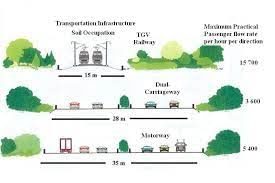
Context
A report by the World Bank, released last year, on financing India’s urban infrastructure needs, focuses on private investments ameliorating urban problems.
About Urbanization:
- Urbanisation is the increase in the proportion of people living in towns and cities.
- Urbanisation occurs because people move from rural areas to urban areas (towns and cities).
- This usually occurs when a country is still developing.
- Employment Factor:
- In India, people have been attracted to move from rural to urban areas on account of improved employment opportunities.
- India is home to 11% of the total global urban population.
- From a population of 377 million in 2011, Indian cities are projected to house 870 million people by 2050, according to the UN’s projections which is by far the highest among all nations.
- Delhi is likely to become the world’s most populous urban agglomeration by 2030, surpassing Tokyo.
Funding patterns for Urban Development:
- Urban finance predominantly comes from the government in India.
- Of the finances needed to fund urban capital expenditures, 48%, 24% and 15% are derived from the central, State, and city governments, respectively.
- Public–private partnership projects contribute 3% and commercial debt 2%.
- The flagship programmes of the government, the Smart City mission, the Atal Mission for Rejuvenation and Urban Transformation (AMRUT), the Pradhan Mantri Awas Yojana (PMAY),, are not more than Rs. 2 lakh crore (that too for a period of five years).
Highlights of the report:
- The World Bank estimates that nearly $840 billion (Rs. 70 lakh crore) would be needed for investment in urban India to meet the growing demands of the population, and $55 billion would be required annually.
- Revenue by Cities:
- This report already points out that nearly 85% of government revenue is from the cities.
- This means that urban citizens are contributing large revenues even as the World Bank report emphasises the levying of more burdens in the form of user charges on utilities, etc.
Other reports:
- Isher Judge Ahluwalia’s report says that by 2030, nearly Rs. 39.2 lakh crore would be required.
- Likewise, the 11th Plan puts forth estimates of Rs. 1,29,337 crore for four basic services, Rs. 1,32,590 crore for urban transport and Rs. 1,32,590 crore for housing.
Challenges faced by Urban Cities in India:
- Poor Water Supply and Waste Management: Water supply is unreliable and irregular among major cities.
- Mountains of solid waste sit on the fringes of our cities.
- Poor drainage, congested roads and deteriorating air quality are other challenges.
- Affordable Housing: Inadequate affordable housing has meant that almost one-sixth of the urban population lives in slums.
- Issues of Urban Slums: Urban Slums are subject to insecure land tenure, lack of access to basic minimum civic services such as safe drinking water, sanitation, storm drainage, solid waste management, internal and approach roads, street lighting, education and health care, and poor quality of shelter.
- Poor Urban Planning: The existing urban planning and governance framework is complex, which often leads to ambiguity and a lack of accountability.
- City planning has become a highly technocratic exercise with long delays and there is a need for the demystification of the master plans.
- Funding: More sources for funding are required like resources other than the public budget need to be tapped. High prices will make services unaffordable.
- Migrant Crisis: Urban dwellers are ignored and unable to live, work and play safely and happily.
- An urbanisation policy needs to take cognisance of future mobility patterns.
- Lack of Coordination: Lack of synergy between urban and rural planning and development. The ‘State Town and country planning acts need to be revisited to harmonise the two.
- Connectivity and Congestion: Congestion and delays in both passenger and commercial traffic are widespread in Indian cities.
Government of India Initiatives:
- Smart Cities Mission: The Smart Cities Mission is a major urban renewal program launched by the Government to develop and upgrade living conditions and infrastructure in selected 100 cities all over the country.
- Objective of the programme is to modernize cities by providing core infrastructure and give a decent quality of life to its citizens, a clean and sustainable environment and application of ‘Smart’ Solutions.
- Ministry of Urban Development is the anchoring agency for the implementation of the project.
- Atal Mission for Rejuvenation and Urban Transformation (AMRUT) Project: Atal Mission for Rejuvenation and Urban Transformation (AMRUT) along with smart cities were jointly planned and launched by the government to transform urban living conditions through infrastructure up gradation.
- AMRUT is aimed at transforming 500 cities and towns into efficient urban living spaces over a period of five years.
- Ministry of Urban Development has selected the five hundred cities with the help of state governments.
Suggestive Measures:
Bottom-up planning:
- For the urban context, plans must be made from below by engaging with the people and identifying their needs.
Empowering the city governments:
- National task force chaired by K.C. Sivaramakrishnan suggested the following:
- Empowering the people and Transferring subjects to the city governments, suggesting that 10% of the income-tax collected from cities be given back to them and
- Ensuring that this corpus fund was utilised only for infrastructure building.
- This would ensure that city governments had an advantage in ensuring rapid transformation.
Urban governance with regular elections:
- Another important aspect of urban infrastructure is linked to urban governance, which is in shambles in most parts of the country.
- Regular elections should be held in cities and there must be empowerment through the transferring of the three Fs: finances, functions, and functionaries.
Steps for Enhancing the Role of the Private Sector:
- These include the adoption of fair processes for
- procuring technical consultancy services,
- strengthening project structuring and management skills in the public sector, and
- empanelment of private sector consultancies.
Clarity and expertise are need of the hour:
- There is a need to bring in more institutional clarity and also multi-disciplinary expertise to solve urban challenges.
- The key aspects that would need to be addressed in this effort are:
- Clear division of the roles and responsibilities of various authorities, appropriate revision of rules and regulations, etc.
- Creation of a more dynamic organizational structure,
- Standardisation of the job descriptions of town planners and other experts,
- Extensive adoption of technology for enabling public participation and inter-agency coordination.
World Banks’s Suggestions:
- The solutions suggested include improving the fiscal base and creditworthiness of the Indian cities.
- Cities must institute a buoyant revenue base and be able to recover the cost of providing its services.
- In simpler terms, it means increasing property taxes, user fees and service charges to name a few.
Source: The Hindu
State Visit of President of Egypt to India
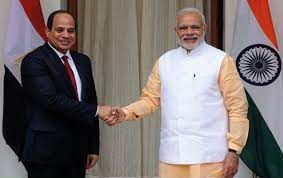
Context
President of the Arab Republic of Egypt, Abdel Fattah El-Sisi, is on a State visit to India from 24-26 January 2023.
- President Sisi, who is on his second State Visit to India, will also be the Chief Guest on India’s 74th Republic Day.
- This is for the first time that President of the Arab Republic of Egypt has been invited as Chief Guest on our Republic Day.
- A military contingent from Egyptian Army will also participate in the Republic Day parade.
India – Egypt Bilateral Relation
- India and Egypt enjoy warm and friendly relations marked by civilizational, cultural and economic linkages and deep-rooted people-to-people ties.
- India and Egypt are celebrating 75 years of establishment of diplomatic relations this year.
- Egypt has also been invited as a ‘Guest Country’ during India’s Presidency of G-20 in 2022-23.
Trade relation
- Bilateral trade between India and Egypt achieved a record high of USD 7.26 billion in FY 2021-22.
- The trade was fairly balanced, with USD 3.74 billion Indian exports to Egypt and USD 3.52 billion imports from Egypt to India.
- More than 50 Indian companies have invested around USD 3.15 billion in diverse sectors of Egyptian economy, including chemicals, energy, textile, garment, agri-business, retail, etc.
Defence cooperation
- In October 2021, Desert Warrior exercise was conducted as the first-ever joint tactical exercise by the air force of the two countries.
- The more recent exercise between the special forces is another indication of the growing willingness to work together.
- The Egyptians have also shown some interest in India’s Tejas fighter jets and Dhruv light attack helicopters.
Cooperation during Covid-19 & Russia – Ukraine war
- When India was hit hard by the second wave of COVID-19, Egypt responded by dispatching three plane loads of medical supplies and providing 300,000 doses of Remdesivir in May 2021.
- India reciprocated a year later when Egypt, the world’s largest importer of wheat, was facing a dire situation following the abrupt halt in wheat shipments from Ukraine following the war.
- In May last year, India — which had put a ban on sale of wheat — allowed export of 61,000 tonnes to Egypt.
What is the significance of the Republic Day invite?
- An invitation to be the Republic Day chief guest is highly symbolic from the Indian government’s perspective.
- The choice of chief guest every year is dictated by a number of reasons — strategic and diplomatic, business interests, and international geo-politics.
Why Egypt has been chosen this year?
- Push to engage the Global South
- The invitation to Mr. Sisi is also being seen as part of the government’s push to engage the Global South.
- Rekindling of the principles of non-alignment
- This invitation is also seen as an attempt to rekindle the principles of non-alignment that have come back to the fore during Russia – Ukraine war.
- Strategic weight of Egypt
- With a population of almost 110 million, Egypt is situated at a location that straddles Africa and Asia.
- It has a standing army that is the largest in the region, a capital that hosts the League of Arab States and a diplomatic presence that punches above its weight in global affairs.
- India is keen on further expanding its ties with Egypt, a key player in the politics of both the Arab world as well as Africa.
- Economic importance of Egypt
- Egypt has boosted its attractiveness through a series of free trade agreements that span Africa (ACFTA; AGADIR; COMESA), Europe (EFTA), Latin America (MERCOSUR) and the Arab world (GAFTA).
- It is also seen as a major gateway to markets in Africa and Europe.
- Egypt’s plans to develop the Suez Canal Economic Zone (SCZONE) into a global manufacturing hub
- The ambitious plans to develop the Suez Canal Economic Zone into a global manufacturing hub are now gathering critical mass.
- SCZONE sits astride both banks of the Suez Canal, a strategic waterway that connects the Mediterranean with the Red Sea to provide the shortest link between European and Asian markets.
- Almost, 20 percent of global container trade takes place through this canal.
- China, as usual, has been the first to take advantage of the opportunities presented by SCZONE.
- China views SCZONE as a vital part of its Belt & Road and Maritime Silk Road projects.
- A deeper economic engagement with Egypt therefore acquires an additional strategic imperative.
- Resetting India’s ties with Muslim-majority countries
- India’s ties with Muslim-majority countries were tested following controversial remarks made by then spokesperson of ruling party in June 2022.
- Egypt was one of the few countries from the Arab world which did not react officially to the controversial remarks.
Conclusion
- There are clear indications that India and Egypt may finally be moving towards achieving some of the potential in bilateral ties that has remained unfulfilled for the last four decades.
Source: Indian Express
GS-III
Bhoj Wetland
Context
The National Green Tribunal has directed the Central Pollution Control Board (CPCB) and Madhya Pradesh Pollution Control Board (MPPCB) to periodically monitor the activities of a cruise vessel polluting the Bhoj wetland in Bhopal, MP.
- A mid-sized cruise vessel can consume 150 tonnes of fuel each day and dump toxic waste in water
Bhoj Wetland
- It is located around Bhopal in Madhya Pradesh
- The wetland is also a Ramsar site with international importance.
- It has two lakes, Upper lake, also called Bhojtal and Lower Lake or Chhota Talaab.
- It provides drinking water to 1.2 million people, Pandey highlighted during the January 10 hearing.
- Upper lake hosts 15 varieties of fish and turtles
- About 2,500 migratory birds across the world visit the wetland that serves as a breeding and nesting habitat for them.
- Bhoj wetland has become a near-natural ecosystem in the 900 years since it was first conceived by a visionary king. Paramara Raja Bhoj (1005-1055 CE), the benefactor-ruler of Malwa, after whom the state capital Bhopal is also named, had the lake built by raising an earthen dam across the Kolans.
- The Bhoj wetland is among the most accessible Ramsar site, with a road going all around the twin lakes.
Wetlands
- Wetlands are areas where water covers the soil, or is present either at or near the surface of the soil all year or for varying periods of time during the year, including during the growing season.
- Water saturation (hydrology) largely determines how the soil develops and the types of plant and animal communities living in and on the soil.
- Wetlands provide a wide range of important resources and ecosystem services such as food, water, fibre, groundwater recharge, water purification, flood moderation, erosion control and climate regulation.
- They are, in fact, are a major source of water and our main supply of freshwater comes from an array of wetlands which help soak rainfall and recharge groundwater.
Source: DTE
What is the Doomsday clock?

Context
Atomic scientists reset the "Doomsday Clock" recently, moving its hands to 90 seconds to midnight - closer than ever before to the threat of annihilation.
About Doomsday clock:
- What is it? It is a symbolic timepiece showing how close the world is to ending.
- The hands of the clock are moved closer to or further away from midnight based on the scientists' reading of existential threats at a particular time.
- Purpose:
- It warns how many metaphorical “minutes to midnight” humanity has left.
- It is intended to warn the public and inspire action.
- How is the clock set? A Chicago-based non-profit organization called the Bulletin of the Atomic Scientists updates the time annually based on information regarding catastrophic risks to the planet and humanity
- Origin and History:
- The clock was created in 1947 by a group of atomic scientists, including Albert Einstein, who had worked on the Manhattan Project to develop the world's first nuclear weapons during World War Two.
- When it was created in 1947, the placement of the Doomsday Clock was based on the threat posed by nuclear weapons.
- In 2007, the Bulletin began including catastrophic disruptions from climate change in its hand-setting deliberations.
- The furthest the clock has been set was 17 minutes to midnight, in 1991, after the collapse of the Soviet Union.
- What time is it now?
- At 90 seconds to midnight, the "Doomsday Clock" is now the closest it has ever been to midnight.
- It is the first time it has moved since it was set at 100 seconds to midnight in 2020.
- Its setting reflects the revived fears of a nuclear war due to Russia's invasion of Ukraine.
Source: The Hindu
The Directorate General of Civil Aviation

Context
The Directorate General of Civil Aviation (DGCA) has imposed a penalty of 10 lakh rupees on Air India for not reporting unruly behaviour of two passengers during the Paris to New Delhi flight on 6th December, 2022.
The Directorate General of Civil Aviation (DGCA)
About:
- It is the statutory and regulatory body in the field of Civil Aviation primarily dealing with safety issues and to regulate civil aviation in India.
- It was formed under the Aircraft (Amendment) Act, 2020.
- It comes under the Ministry of Civil Aviation
- The headquarters are located in New Delhi with regional offices in the various parts of India.
Functions
- It is responsible for formulation of national policies and programmes for the development and regulation of the Civil Aviation sector in the country.
- It is responsible for regulation of air transport services to/from/within India and for enforcement of civil air regulations, air safety and airworthiness standards.
- It also co-ordinates all regulatory functions with International Civil Aviation Organisation.
- The DGCA investigates aviation accidents and incidents, maintains all regulations related to aviation and is responsible for issuance of licenses.
- Keeping a check on aircraft noise and engine emissions in accordance with ICAO Annex 16 and collaborating with the environmental authorities in this matter, if required.
- Approving training programmes of operators for carriage of dangerous goods, issuing authorizations for carriage of dangerous goods, etc.
Source: Newsonair
|
38 videos|5269 docs|1114 tests
|
FAQs on UPSC Daily Current Affairs- 25th January 2023 - Current Affairs & Hindu Analysis: Daily, Weekly & Monthly
| 1. What are the three main subjects covered in the UPSC exam? |  |
| 2. What is the significance of the UPSC exam in India? |  |
| 3. What are the daily current affairs? |  |
| 4. Why is it important for UPSC aspirants to stay updated with daily current affairs? |  |
| 5. How can UPSC aspirants stay updated with daily current affairs? |  |

